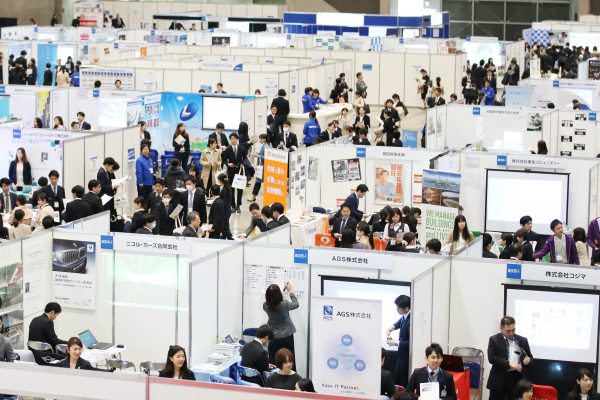Looking at COVID-19’s impact on the Japanese labour market, there are two key takeaways.
The first is that the increase in unemployment is modest compared to the decline in economic activity. Many non-regular workers — disproportionately women, youth or older workers — who lost their jobs during the first state of emergency in April 2020 chose not to look for new employment and so fell out of the labour force. This partially explains why the unemployment rate remained low.
The Japanese government also expanded the employment adjustment subsidy, which enabled businesses to put workers on temporary leave while keeping them nominally employed. To respond to the sharp decline in consumer demand, companies reduced employees’ overall number of hours. So Japan’s primary method of labour force adjustment to the pandemic was a generalised reduction in working hours.
As of 13 August 2021, the government had approved four million applications for over 4 trillion yen (US$36.3 billion) in subsidies, which blunted the impact of COVID-19 on employment. The subsidies enabled creative work-sharing arrangements where employees from heavy-hit sectors — such as the airline industry — could be temporarily dispatched to work in less-impacted sectors such as retail. Both small- and medium-sized enterprises and larger firms benefitted from these subsidies.
The second major takeaway is that, as in other countries, the impact of COVID-19 in Japan varied by industry, with the accommodation and food service industries hit particularly hard. A high proportion of workers in these industries are women in non-regular employment on minimum wage, with limited alternatives and no unemployment insurance.
The government should build a stronger ’social-bridge type’ safety net that provides individuals, especially non-regular workers, with comprehensive support, such as vocational training and advice to new employment opportunities, on top of unemployment allowances.
Examining the medium-term outlook for the Japanese labour market, Tokyo is now under its fourth state of emergency since April 2020, so the recovery of household consumption has been delayed. If the pandemic continues for the next few months, the business situation of affected companies may deteriorate and bankruptcies may drive a potential increase in the unemployment rate.
Maintaining existing employment levels under depressed economic conditions could also negatively impact the hiring of new graduates. According to research by Recruit Works Institute in April 2021, university graduate job openings-to-applicants ratio slightly decreased to 1.50 in the 2021 financial year from 1.53 in the 2020 financial year. The ratio in the 2019 financial year was 1.83, suggesting that the recruitment plans of employers do not appear to be significantly influenced by COVID-19.
During the ‘employment ice age’ in the late 1990s and early 2000s, many new graduates could not land stable jobs in Japan. This time, due to the decrease in the working-age population, the situation is unlikely to be as serious as in the 1990s. But it is still crucial to reform Japan’s collective recruitment system of new graduates and establish a more diverse year-round system so that young people can change industries more easily.
The long-term impact of COVID-19 on the Japanese labour market will be significant. The April 2020 state of emergency forced the rapid adoption of remote working throughout the country, with 53 per cent of workers in Tokyo now working remotely. The permanent integration of working from home could redefine the relationship between work and family in Japan. Raising children, caring for elderly parents, or a spouse’s sudden transfer, no longer have to be career roadblocks, particularly for women. If such a flexible work culture takes root in Japan, the labour force participation rate of women could see a larger increase.
Alongside remote working, a recent government survey noted that 10 per cent of young people in their twenties have side jobs supplementing their primary income and 60 per cent are interested in taking on side jobs. If normalised, this would enable a more diverse work culture, promote entrepreneurship and increase labour market fluidity in Japan. Expanding continuing education aimed at human resource development is also very important.
The impact of COVID-19 on Japan’s digital transformation is also apparent. An increasing number of companies now require young employees to have a digital skillset for key positions via ‘job’ -focused employment. Under ‘job’-focused employment the company and employees sign an employment contract that clarifies the duties, work location, working hours etc. and the employees work only within that range. In this sense, it is different from the traditional Japanese-style ‘membership’ employment in which employees entrust their lives to one company. This digital transformation is accelerating the erosion of ‘seniority’ and ‘lifetime employment’, two pillars of Japanese employment that have hindered reform and labour market fluidity, making space for positive change.
Yuri Okina is Chairperson of the Japan Research Institute and Executive Vice President of Nippon Institute of Research Advancement


Despite Abe’s Womenomics and Equal Pay for Equal Work non regular workers in general and women in particular have been hardest hit by the pandemic. The so called structural reforms promised by Abe many years ago have never happened. Corporations continue to exploit women and younger workers. The pandemic has served to worsen these dynamics. Suga, et al in the LDP refuse to take decisive, proactive action. The outcome of the mayoral election in Yokohama suggests that the voters may be ready for some dramatic efforts. We shall see in the coming weeks.